Select Device Freestyle Lingo Freestyle Libre 3 Freestyle Libre 2 Freestyle Libre 14 Day Dexcom G7 Dexcom G6 Dexcom Stelo Guardian Connect Medtronic Simplera Eversense Meter Omnipod Omnipod Dash Medtronic 780G Medtronic 630G Tandem t:slim X2 Bigfoot Unity Medtronic InPen Tempo Pen NovoPen 6/NovoPen Echo Insulin Pen Afrezza CeQur Simplicity Patch V-Go Patch Omnipod GO Patch Syringe and Vial Beta Bionics iLet Pancreas Control IQ with Dexcom Control IQ with Freestyle Libre Medtronic 780G with Smart Guard Omnipod 5 Tandem Mobi Tidepool Loop twiist DIY Loop Apple Series 6/7/8/9/10/SE (2nd Generation) Garmin vívosmart 5™ Garmin Venu Sq 2 Garmin Venu 3 Garmin vivoactive 5 Garmin Fenix 8 Garmin vivofit jr 3 Garmin Forerunner 165/265/965 Garmin epix (Gen 2) Garmin Enduro 3 Fitbit Ace LTE Fitbit Charge 6 Fitbit Inspire 3 Fitbit Versa/Versa 2/4/Versa Lite Fitbit Sense 2 Fitbit Luxe Google Pixel 2/3 Samsung Galaxy 4/5 Xiaomi Mi Band 9 Oura Ring Whoop 4.0 Withings ScanWatch 2 Withings ScanWatch Lite Pedometer 3D Pedometer
Select Device Freestyle Lingo Freestyle Libre 3 Freestyle Libre 2 Freestyle Libre 14 Day Dexcom G7 Dexcom G6 Dexcom Stelo Guardian Connect Medtronic Simplera Eversense Meter Omnipod Omnipod Dash Medtronic 780G Medtronic 630G Tandem t:slim X2 Bigfoot Unity Medtronic InPen Tempo Pen NovoPen 6/NovoPen Echo Insulin Pen Afrezza CeQur Simplicity Patch V-Go Patch Omnipod GO Patch Syringe and Vial Beta Bionics iLet Pancreas Control IQ with Dexcom Control IQ with Freestyle Libre Medtronic 780G with Smart Guard Omnipod 5 Tandem Mobi Tidepool Loop twiist DIY Loop Apple Series 6/7/8/9/10/SE (2nd Generation) Garmin vívosmart 5™ Garmin Venu Sq 2 Garmin Venu 3 Garmin vivoactive 5 Garmin Fenix 8 Garmin vivofit jr 3 Garmin Forerunner 165/265/965 Garmin epix (Gen 2) Garmin Enduro 3 Fitbit Ace LTE Fitbit Charge 6 Fitbit Inspire 3 Fitbit Versa/Versa 2/4/Versa Lite Fitbit Sense 2 Fitbit Luxe Google Pixel 2/3 Samsung Galaxy 4/5 Xiaomi Mi Band 9 Oura Ring Whoop 4.0 Withings ScanWatch 2 Withings ScanWatch Lite Pedometer 3D Pedometer
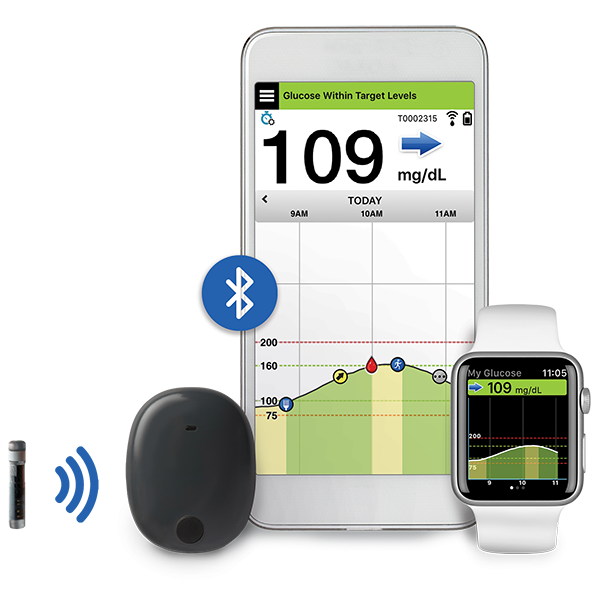

Summary
This sensor lasts the longest - 180 days. It has to be placed under the skin by a healthcare provider. It has two parts, the implantable sensor and a transmitter that sends data to a mobile device.
MARD: 8.5-9.1%
*Recently FDA approved for use with insulin pumps.
The Medtronic Guardian Connect is a continuous glucose monitoring (CGM) system that provides real-time glucose data on a compatible smartphone. The system offers optional low and high blood sugar notifications and can be inserted on the abdomen or back of the upper arm.
MARD of 9.6%
Components
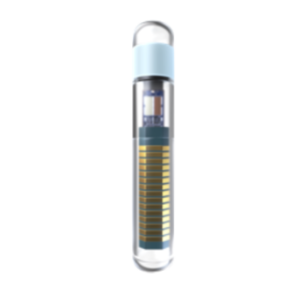
Eversense : Sensor
Professionally inserted by a physician during a medical visit. Minor procedure.
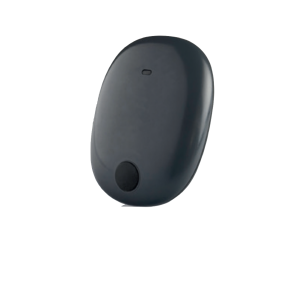
Eversense : Transmitter
Transmitter sits outside of the body and is held on by an adhesive. Sends data every 5 minutes to a connected mobile device.
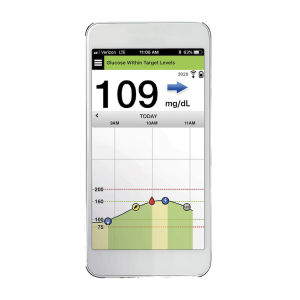
Eversense : Receiver
Real-time glucose measurements sent to a compatible mobile-device or smart watch. No need for a separate receiver. Available for both iOS and Android devices.
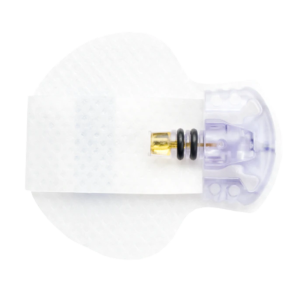
Guardian Connect : Sensor
Sensor is inserted underneath the skin, either on the abdomen or arm. Push buttons applicator allows sensor to be placed on the body in one step.
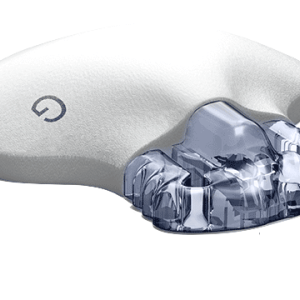
Guardian Connect : Transmitter
Seashell-shaped with built-in Bluetooth capability that allows it to send glucose data directly to a smartphone every 5 minutes.

Guardian Connect : Receiver
Trends and alerts are viewed directly on a mobile device. Available for both iOS and Android devices.
Device Details
Overview
Very small implantable sensor but large transmitter must be worn on top of the skin.
One of the larger sensors, may be cumbersome to wear on some parts of the body under clothes.
Affordability and Access
$$$$
Sometimes covered. Insertion and removal require a Health Care Provider. Insertion costs $100-$300, and removal costs $100-$400. Sensor and transmitter cost $800-$1400.
$$$$
Sometimes covered. The costs vary depending on individual insurance coverage and how insurance classifies CGMs. Price range $0-$600/month.
Data Monitoring Options
Data View Options
Yes
Eversense mobile app receives and displays data in easy-to-read charts and graphs that can be shared with family and friends through the Eversense NOW app.
Yes
The Guardian Connect mobile app allows users to view glucose levels, trends, create customizable alerts, and share blood glucose data with family and friends.
Duration and Storage
180 Days
Sensor lasts 180 days, but a physician must implant it. Transmitter must be charged daily.
7 Days
Sensors last 7 days, and transmitter battery needs weekly charging and replacement once a year. Both can be stored between 36°F - 86°F.
Vision / Auditory / Dexterity
YES text to speech
YES vibration alerts
SOME dexterity needed
YES text to speech
YES vibration alerts
A LOT of dexterity needed
Patient Considerations
Active Lifestyle
Water-resistant transmitter when submerged in 1 meter of water for up to 30 minutes and must be within 25 feet of the connected smart device.
Waterproof transmitter when submerged in up to 2.5 meters of water for 30 minutes and must be within 20 feet of a connected mobile device.
Avoiding Highs and Lows
On-body vibration alerts when blood glucose levels are higher or lower than the set range. Trend arrows show the direction glucose is heading, with the rate of change.
Measures sensor glucose 24/7 and sends alerts when a high or low is detected. Trend arrows show the direction glucose is heading, with the rate of change.
Comfort
Longest lasting sensor fits comfortably under the skin. Minor procedure is required.
More tape is needed for Medtronic sensors.
Easy Insulin Dosing
Predictive alerts make insulin dosing easier by tracking high and low trends.
Sensor trends can be used for dose adjustment.
Easy to Use
Minor procedure. Requires insertion by a physician during a medical visit.
Rechargeable sensor transmitter but has the most steps to change sensor.
Fewer Fingersticks
2 daily finger-sticks are needed to calibrate the sensor.
2 daily finger-sticks are needed to calibrate the sensor.
Privacy
Somewhat discreet. Tiny sensor is implanted under the skin, so the user can be discreet when needed. Ability to see sugar on watch or phone. Sensor not movable on body and requires regular meter use.
Somewhat discreet. Ability to see sugar on watch or phone. Sensor requires regular meter use.